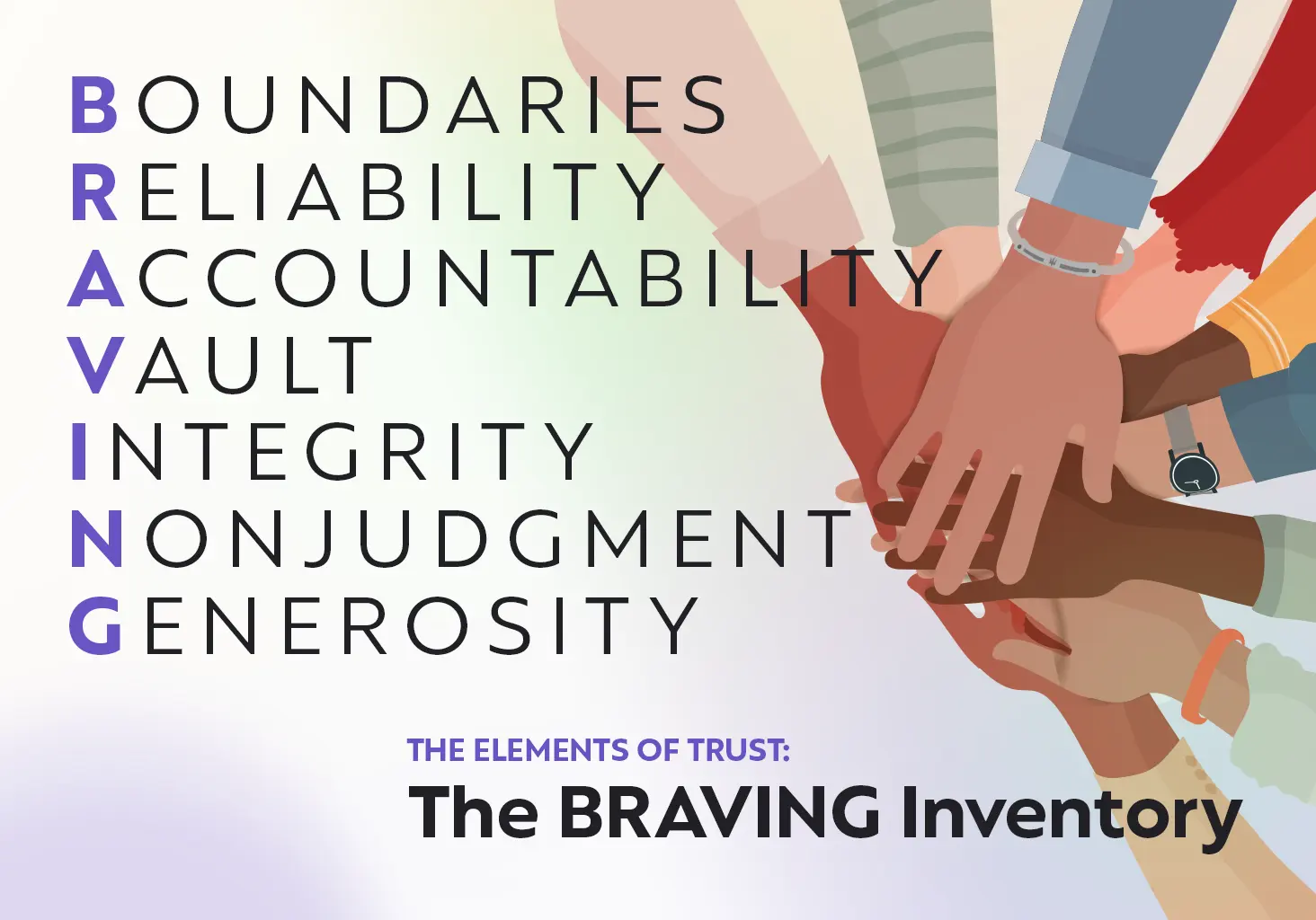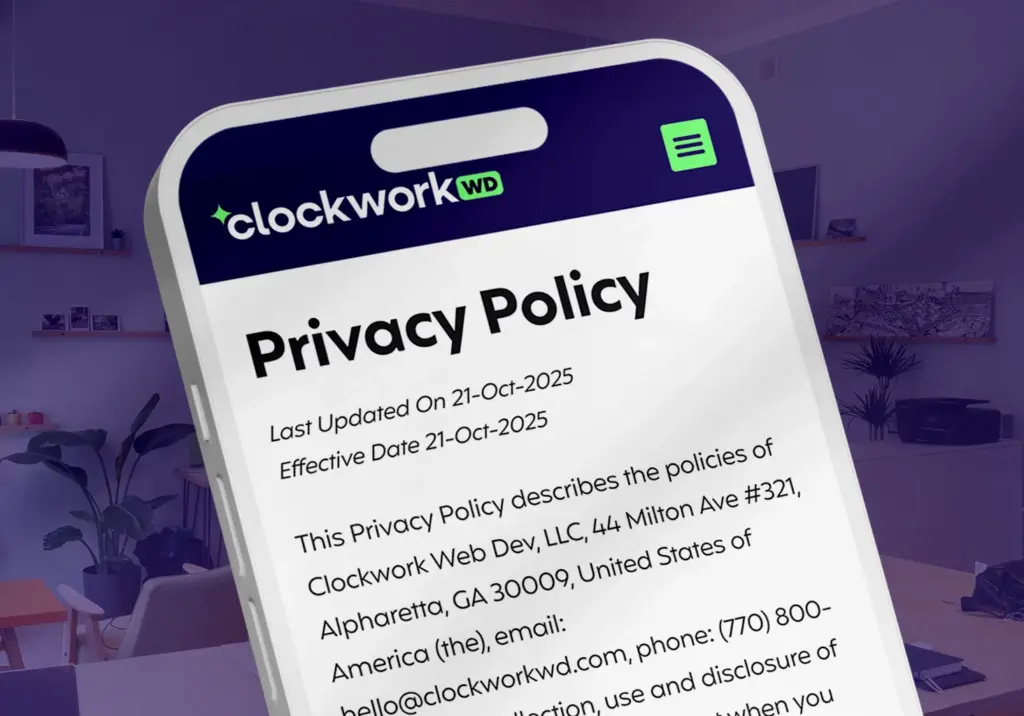Since coming to Clockwork as Chief of Staff, I’ve watched our team flourish from a close-knit group of four to five people into an agency of 10-15 talented web wizards. The growth has been exciting, challenging, and eye-opening. But the biggest lesson? Trust makes work actually work better.
Discussion of team culture gets a lot of air time, but trust is the required foundation when you’re working together 30 or 40 hours a week. Whether online or in-person, you need to know you can rely on others when a project goes sideways or a client changes direction and scope.
I’ve never met anyone who would disagree that trust matters (in all facets of life), but it’s far more difficult to articulate exactly what trust means in practice. What builds trust? What tears it down? What repairs it when it’s been broken unintentionally?
Breaking Down What Trust Actually Looks Like
Finding specific answers to those questions led me back to Brené Brown’s work with her Dare to Lead team. They developed an acronym that outlines seven concrete elements of trust. We’ve been using this framework at Clockwork for the past six months, and it’s made trust tangible instead of abstract or corporate speak on our site.
The framework helps us understand where trust gets built or broken – with each other and with clients. We can spot both trust builders and red flags alike, whether clients shift direction mid-project but expect the same timeline, or we miscommunicate how those changes impact scope.
Seven Elements That Build Lasting Trust
Let’s dig into the tool.
Here are the seven elements of the BRAVING inventory of trust:
B – Boundaries
R – Reliability
A – Accountability
V – Vault
I – Integrity
N – Nonjudgment
G – Generosity
Boundries: Setting Clear Expectations
Setting clear expectations means everyone knows where they stand. I’ve noticed these boundaries show up in ways both big and small: paying invoices on time, following through with deadlines as communicated, or being honest about what we are and are not comfortable with.
Our boundaries have gotten clearer as we’ve grown. We maintain what we call a “No List,” meaning there are certain services we aren’t ready to offer right now. Though we might add that when we find the right team member, clear boundaries help our team and clients know exactly what we will (and won’t) deliver reliably.
Reliability: All About Follow-Through
As a company, we communicate what we can do and estimate a timeline. We give regular updates, and if something shifts, we let the client know as soon as possible. We don’t overpromise or underdeliver. Our reputation for reliability has helped us grow into our evolution from ClockworkWP to ClockworkWD and our acquisition of New Tricks.
Internally, reliability looks like following through on commitments to each other, whether that’s delivering a project component on time or simply showing up prepared for meetings. Predictability is really just reliability in action, and that’s what makes us function like a well-oiled team.
Accountability: Owning Mistakes and Successes
Nobody’s perfect. While we all try to avoid mistakes as much as possible, knowing how to repair when something goes wrong is just as (if not more) important. If we mess up or miss something, we communicate it clearly and offer options for fixing the situation. There’s no benefit of glossing over or avoiding talking about our mistakes.
Growing into a bigger team means more moving pieces and more chances for things to go sideways. But when everyone owns their part and understands their role clearly, problems become puzzles we solve together instead of playing the blame game.
Vault: Respecting What Stays Private
Everyone has aspects in life and business that need to be kept in strict confidence. Breaking that bond is very hard to patch up. But what many people don’t realize is that a vault works in both directions. If someone shares information about someone else that I’m not supposed to know, that erodes trust too. It gives me a strong signal that you might expose something sensitive about me to someone else.
We always try to be explicit about confidentiality. Our clients include financial practices, law firms, and organizations handling sensitive data, so a secure vault of confidence actually is foundational to everything we do. We apply the same standards internally, even when we are sharing personal struggles and experiences with each other as teammates, because trust is a bond that supports both interpersonal relationships and effective work.
Integrity: Living Our Values
Many companies have values plastered all over their website, but they’re worthless if they aren’t being followed through with everyday decisions. Are we doing right by our values, each other, and our clients? We ask this question often.
Our values at Clockwork – excellence, empathy, integrity, and collaboration – aren’t just marketing copy. They guide how we hire, interact with clients, and handle challenges. When we acquired New Tricks, as just one example, integrity meant genuinely caring for their clients and team during the transition, not just absorbing a business.
Nonjudgment: Making Space for Complexity
We’re all complex and limited because we’re human. That can get lost in daily deadlines and quarterly goals. While it can be frustrating, we sometimes fall short. Imperfection is pretty much to be expected. That’s why we never judge or shame each other, even when holding each other accountable to our commitments and values.
Remote work makes this especially important. When someone’s struggling with a project or having a tough day, we approach it with curiosity, not judgment. What support do they need? What can we learn? How do we prevent similar challenges next time? Starting from a place of understanding changes everything.
Generosity: Assuming Positive Intent
That same mindset applies to how we interpret actions and words. A single sentence or action can be interpreted many different ways. Jumping to the worst-case conclusion erodes trust. We choose to give the benefit of the doubt and be generous with our interpretations. That goes for teammates and clients.
Generosity doesn’t mean we ignore red flags or avoid difficult conversations. It means we start from a place of assuming positive intent and then work to understand what’s really happening. More often than not, what looks like a trust issue is actually a communication blip that can be resolved with a straightforward conversation.
Make BRAVING Work For You
I actually stumbled back into this tool earlier this year during a challenging personal situation where trust had been broken. The BRAVING inventory helped me pinpoint exactly which actions had damaged that relationship and what would need to happen for repair. Since then, I’ve used it countless times with our team and client work. When we see a client or a team member building trust in one of these seven areas, we call it out and celebrate it. If an issue arises and it feels like trust has come into question, this approach helps us have a much more productive discussion around what specific problem took place so we can explore potential action steps.
Here’s what I love about it: the tool works both ways. The BRAVING lens helps you understand why certain people feel trustworthy (spoiler alert: they’re probably strong in most of these seven areas), and it gives you language to address trust issues before they become relationship-enders or job vacancies. It also helps me understand what I can do to build areas where others can trust me, then focus my attention on repair in any areas where I may have made a mistake.
Build Your Leadership Legacy
As I talk about in my comprehensive guide on scaling your agency, one of the hardest parts about growing isn’t the hiring or processes. It’s learning to be a leader instead of a doer. Trust is the foundational infrastructure that allows you to let go of day-to-day work while maintaining confidence in your team. And remember it goes both ways. Leaders need to be able to trust their team, and team members need to be able to trust their leaders.
The BRAVING framework also helps explain why we connect easily with certain people, whether in our personal or professional lives. Our team has built strong trust because these elements are consistently in place, which translates to fewer miscommunications, quicker approvals, and projects that deliver what everyone envisioned.
For new hires, we introduce BRAVING early in their onboarding. It gives everyone shared vocabulary for navigating the bumps that inevitably come with growth.
Making It Stick
I hope the framework helps your team as much as it’s helped ours. Trust isn’t something you build once and forget about – it’s a garden you water with small, consistent actions over time. Go forth and make BRAVING a part of your team’s everyday conversations.




